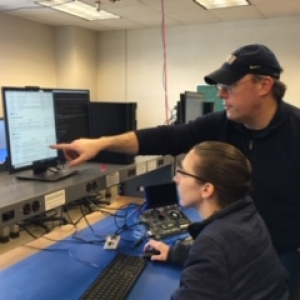Following up on the success of the Introduction to Connected Devices class, Intel Corporation's Internet of Things Group approached ISSACS' Dr. Ken Loparo and Nick Barendt in 2019 about funding the development of a new course in Edge Computing. Edge Computing is the next evolution of computing, after Cloud Computing, driven by the IoT requirement to distribute computing resources closer to the "edges" of the networks to reduce communications latency and costs. Intel Corporation provided a generous monetary grant plus equipment to support the development of this course and student laboratory. Dr. Ken Loparo and graduate student Matt McConnell are offering the Designing IoT Edge Devices course for the first time this term (Spring 2020) as a "Special Topics" pilot offering.
In the Designing IoT Edge Devices course, students experience the development process of an Internet-of-Things (IoT) device from a software/hardware co-design perspective through a series of laboratory projects. These projects include building a Linux image from scratch, developing a Linux kernel device driver to interact with FPGA hardware peripherals, using various communications mechanisms to collect sensor data and interact with the environment, communicating with cloud-based services with standard networking protocols, and developing user interface applications.
The final project for the course will allow students to take what they have learned about designing IoT Edge Devices and apply that knowledge to a project of their choosing (within the bounds of the available hardware platform).


